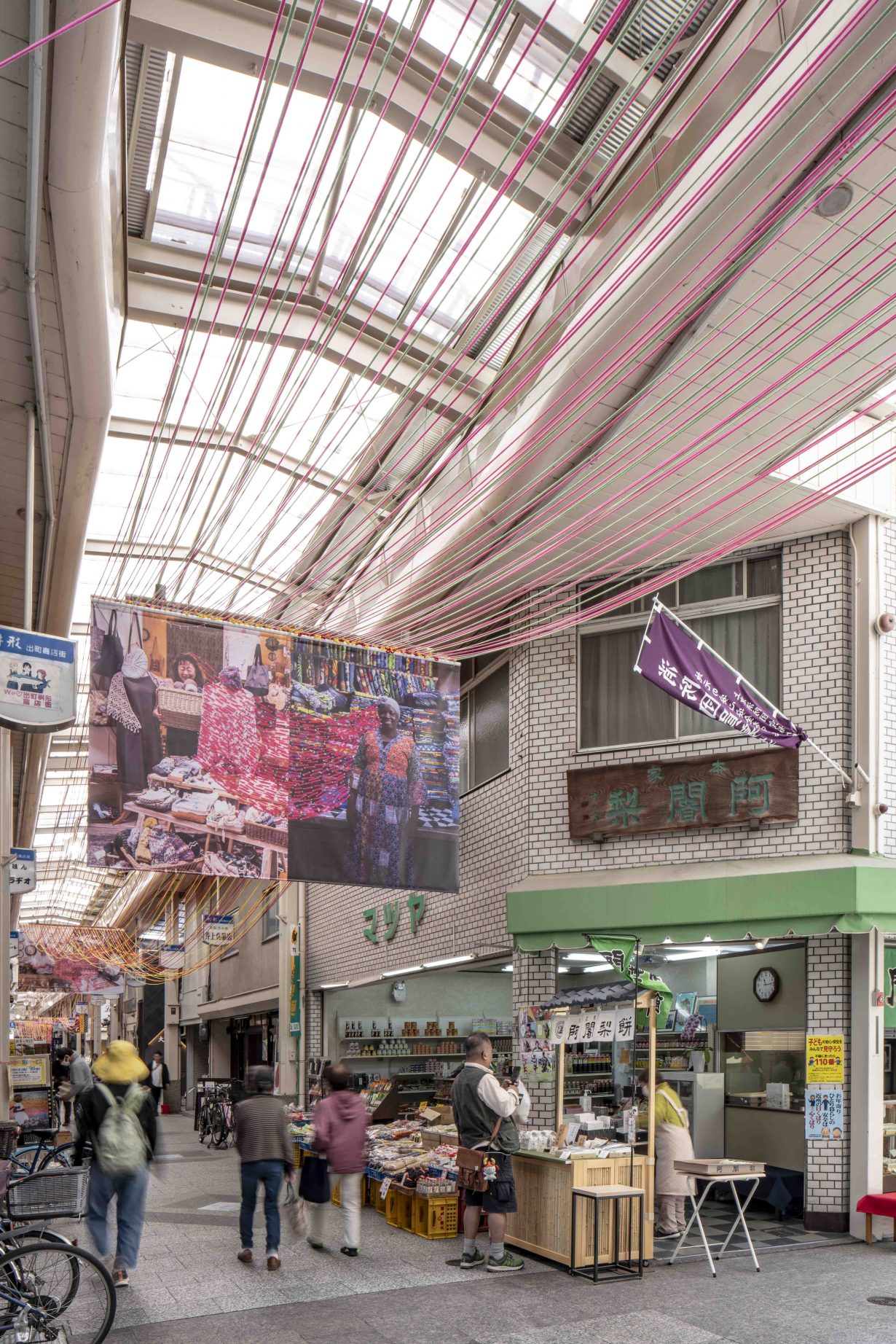15 exhibitions around the theme of Border negotiate between internationalism and cultural specificity
How does an art festival negotiate between internationalism and cultural specificity? The 11th edition of the international photography festival Kyotographie offers a plausible answer to this question via 15 exhibitions around the theme of Border, sprawled across the city. Among these, it is the solo shows that most effectively address the theme: Joana Choumali’s Kyoto–Abidjan (2023) presents a cross-cultural intervention of stitched-together photos of market stall owners in Kyoto and Abidjan (in photos printed side by side, two fishmongers, for example, are connected by a series of red threads); César Dezfuli’s Passengers (2016–) consists of portraits of West African refugees; and Dennis Morris’s Colored Black series, a playful installation depicting East London’s British-Caribbean community from the 1960s and 70s; all of which concern issues of global migration. Overall, the festival presents an example of how glocalisation, or what sociologist Victor Roudometof calls ‘the refraction of globalisation through the local’, can be realised through photographic projects exploring themes such as fashion, youth culture, health and wellbeing.
Artist Yuriko Takagi’s exhibition Parallel World is installed in the Ninomaru Palace inside the seventeenth-century Nijō Castle. Clothing, serving as a border between our bodies and their environment, is explored in two series that probe the boundaries between traditional clothing and contemporary fashion. In Threads of Beauty (1998–), Takagi embarks on a journey across Asia, Africa and South America to document traditional dress worn in everyday life. The resulting portraits, printed on large translucent screens suspended from the ceiling, endow the subjects, whose ethnicity and location remain unspecified, with a sense of monumentality. The other part of the exhibition highlights Takagi’s ongoing collaborations with fashion designers such as Issey Miyake and John Galliano, featuring portraits of models adorned in couture, displayed flat on waist-high podiums. Despite their disparate contexts, both projects maintain a meticulous attention to the form, texture and movement of the garments, whether a Dior model in a studio or a motorcycle-riding man on an Indian street.

In an example of the festival’s interactions with the local community, Spanish photographer Coco Capitán presents her series Ookini, photographs of Kyoto youth made during a two-month residency in the city. Portraying students, maikos (apprentice geishas), future kama masters and other teenagers living in Kyoto, the series is Capitán’s attempt to understand the delicate balance between adolescent life and tradition in a city in which the latter holds profound cultural significance. Capitán employs minimal staging to photograph the young people in their daily outfits and school uniforms, always positing the subject in the middle of the frame from the same frontal vantage point. The exhibition in Kōmyō-in Temple commences with a room featuring portraits of young Zen monks seated and engaged in chanting. The photographs lie flat on wooden boxes placed on the tatami floor, set against the temple’s Japanese rock garden, lush with green moss. All of these monks are captured in uniform compositions with the subject at the centre. This systematic approach, a sharp and dispassionate style echoed in other works from this series, is reminiscent of photographer August Sander’s taxonomy of the early-twentieth-century German populace, creating a developing typology of Kyoto’s young generation.
Installed in Hachiku-an, a machiya townhouse built by Muromachi’s richest merchant, Risuke Inoue IV, in 1926, photojournalist Kazuhiko Matsumura’s exhibition Heartstrings recounts the stories of individuals with dementia and its impact on their families. Matsumura strives to recreate various symptoms of the disorder, such as the loss of sense of time and place, by theatrically displaying photographs of blurred family portraits and half-faded newspapers on a dining table. The exhibition title, taken from an interviewee’s comment that ‘he felt as though the strings between their hearts had been severed’ when his wife no longer recognised him, materialises as a single thread of string stretching from the venue entrance, weaving through every room and entwining with the objects on display until it reaches a framed photograph in the last room.
While the curatorial theme of Borders seems to be interpreted in the broadest sense, loosely connecting the diverse issues explored in the exhibitions, it evokes Kyotographie’s capacity to foster a dynamic dialogue between people and place. At its core lies a sense of multiple communities that might coexist, for a moment, without borders.
Kyotographie 2023: Borders, Various venues, Kyoto, 15 April – 14 May
